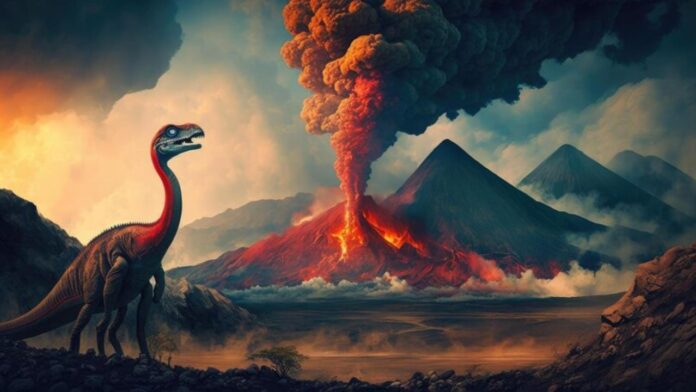To settle the ongoing debate about whether an asteroid impact or volcanic eruptions caused the Cretaceous-Paleogene (K-Pg) mass extinction 66 million years ago, researchers at Dartmouth College took an innovative computational approach. They used climate modeling powered by a network of interconnected processors to analyze possible extinction scenarios without human input or bias.
By modeling climate data in reverse, the AI system identified the most likely chain of events leading to conditions that match the fossil record of the extinction. This novel method evaluated over 300,000 combinations of factors like greenhouse gas emissions and environmental changes in the million years preceding the die-off of dinosaurs and other species.
The model results suggest the extreme volcanic activity of the Deccan Traps in India could have been enough to trigger the global collapse of ecosystems and food chains. But the analysis also revealed declines, indicating an additional shock event—the asteroid impact in Mexico’s Chicxulub crater. So while volcanic emissions may have severely disrupted climate stability, the space rock likely provided the final blow to Earth’s most severe mass extinction. Additionally, you can also read about- Chinese Rocket Carried Mysterious Undisclosed Payload Before Crashing into Moon
By demonstrating an ability to work backwards through paleoclimate data to determine causes and effects, the new computational approach shows promise for studying long-standing geological mysteries. Lead author Alex Cox notes that the method is scalable, efficient, and minimizes human assumptions. So this innovative use of AI and parallel processing opens new doors for research across earth science disciplines.
You May Find Interest: The Mysterious Young Age of Mars Rocks on Earth Explained


















![10 Countries With the Best Healthcare in the World [Statistical Analysis] Countries With the Best Healthcare in the World](https://articleify.com/wp-content/uploads/2025/07/Countries-With-the-Best-Healthcare-in-the-World-1-150x150.jpg)










